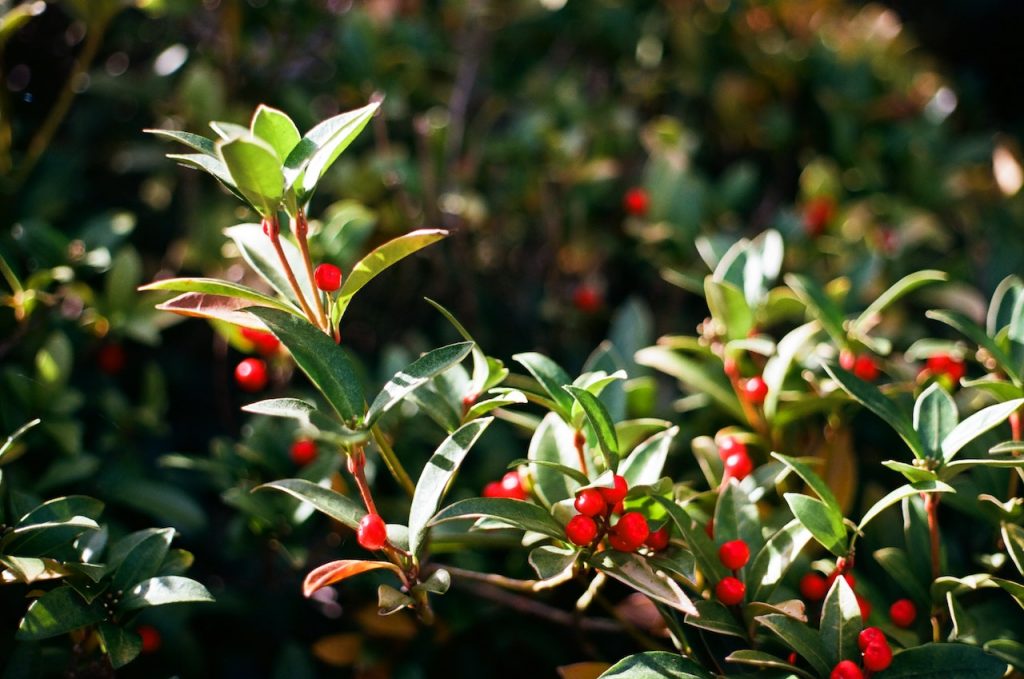Dharma Glimpse by Angie

For the last two spring seasons I have watched with intrigue as new Holly leaves form on my walks around Malvern. They emerge small, waxy and surprisingly soft to the touch. Over the course of a few weeks they harden up, gradually lose their softness and their edges turn from soft points to the prickly spikes iconic of the Holly plant. If I look down whilst stood by the Holly, I can often see a few fallen old holly leaves on the floor; their hard adult bodies now skeletal, withered, dried and crumbly. Their prickles that were once painful to stand on barefoot, now crumbling grains of leaf matter. The whole life cycle present in one moment, individual holly leaves and branches forming and dying whilst the plant as a whole persists.
This reminds me how soft and vulnerable we are when we emerge from the womb and how, over time our many edges harden to form the necessary protections and defences against the world. Sometimes those barriers soften with age, sometimes they become more deeply entrenched as they continue to be needed and the value of getting close enough to others to be vulnerable and connected is weighed up against the cost of getting hurt.
I’ve found that, over time, spiritual and therapeutic practise has profoundly altered my prickles. Some edges and defences have melted or fallen away entirely, others have become like an adult cat’s claws; able to stay contracted or to extend dependant on the situation. My fluid sense of self persisting as the many strands that make it up rise and fall, solidify and wither. Each move towards openness allows me to feel more intimately in touch with love and presence, with interconnectedness and the Ultimate. As I experience this more frequently and come to trust their existence, in the times when my protections extend and I feel more distant from them, I can still know that they’re there.

Leave a Reply